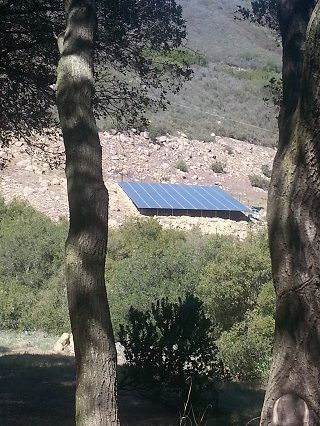From Guest Blogger Giuliaemme: Three Interesting and Worthwhile Breakthroughs in Solar Photovoltaic Panels
The solar energy adoption in relation to energy needs is a crucial theme. Indeed it’s not a big secret that the explotation of non-renewable resources, like burning fossil fuels as oil or gas, has huge consequences like climate changing, pollution, resource deplation.
On the other hand, solar energy, is an infinite source of energy, and it is clean, green and environment-friendly.
With the help of a photovoltaic panel system, it is possible to convert solar energy into electricity, and consequentially to produce it directly by the sun.
There are a lot of photovoltaic systems that, depending on their power, kind, and size, can satisfy energy needs at every level, from domestic use to commercial application.
Despite so many benefits of solar energy’s adoption, there are still many problems linked to photovoltaic, especially about photovoltaic panels’ production.
In fact panels’ manifacture is still expensive both economically and environmentally, because the silicon used to produce solar cells is quite expensive and polluting.
Not surprisingly, usually the impact of solar panels’ production can be assimilated to the environmental effects of every kind of industry.
Furthermore, also the photovoltaic panel’s life cycle constitute a problem: indeed the average life of solar panels is about 20 years, and the disposal of a photovoltaic system requires a particular attention for silicon’s toxicity.
However the research on solar energy is very dinamyc and tries constantely to face those problems.
It’s the case of the Resarchers at the University of Sheffield in the UK who have invented a spray-on photovoltaic cell. That is possible thanks to pervoskite, a natural element that seems to be better that silicon for solar cells: perovskite, indeed, can be manufactured cheaply and at low temperature, and it works also in a wafer-thin layer.
So the spray-on perovskite solar cell could be a cheaper and less polluting solution able to convert a lot of surfaces into a photovoltaic panel.
Another interesting invention comes from Italy and it’s a double-sided photovoltaic panel.
The promoter of this innovative idea, Franco Traverso, explains that despite polular belif, the light spreads also behind the panels. So a panel that take advantage of this reverb’s effect can produce 40% more than a regular panel.
Traverso also asserts that he has patented a technology which allows to produce those cells at a normal cost, but over 50-years durable.
This discover could be revolutionary because it allows to produce at the same costs more efficient and durable panels.
Finally, a little technology that can improve energy’s production of solar panel is already on the market.
Convert has lauched a kit ready-to-use that basically transforms your panel in a sunflower: the kit, through a solar tracker, rotates photovoltaic panels to follow the sun along the whole of its daily movement from East to West.
This ready-to-use kit, which is very simple to install and also suitable for a little and domestic solar system, can produce an increase in energy up to 25%.

